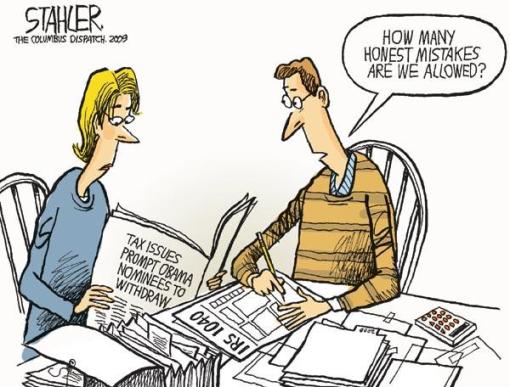A study of the recovery plan shows most households will qualify for a tax break. Boost for some could be worth several hundred to several thousand dollars.
Roughly 97% of American households could see tax savings as a result of the American Recovery and Reinvestment Act, according to a new analysis by a nonpartisan research group.
The Tax Policy Center crunched the numbers and concluded that the average savings would be $1,179. But how much a household actually gets depends on income, marital status and whether a filer has children. The savings range from a few hundred dollars to several thousand.
The law, which President Obama signed on Tuesday, contains a range of tax breaks for individuals. Those likely to affect the greatest number of households are the new Making Work Pay credit worth up to $400 ($800 for joint filers); a patch to protect middle- and upper-middle-income families from having to pay the Alternative Minimum Tax; and expansions of the earned income tax credit and the child tax credit for low-income families.
There are also breaks that address specific situations: a new credit for first-time home buyers, a sales tax deduction for car buyers and a new credit to help pay for college tuition. For people receiving unemployment benefits, the first $2,400 will be tax free.
On Saturday, Obama said the government had already taken action on the broadest of the law’s cuts — the Making Work Pay.
The Treasury Department has told employers to reduce the amount of taxes withheld from paychecks by April 1. Treasury estimates that a typical family will begin taking home about $65 more per month, according to Obama.
“Never before in our history has a tax cut taken effect faster or gone to so many hardworking Americans,” Obama said in his weekly video and radio address.
In addition, the economic recovery plan contains a host of tax breaks for small businesses.
The Tax Policy Center used a representative sampling of all tax filers and non-filers, including information on their income, their spending and their demographics. And then they applied the various tax provisions for which those in the sample pool qualify.
Some Tax-Saving Scenarios
A single person with no children making between $20,000 and $30,000 would see a 12.5% reduction in his or her tax liability for an annual savings of $453. The same person making between $50,000 and $75,000 would see a 4.6% drop, or $626.
Tax Savings
How households may fare under the economic recovery plan.
Income Avg. Tax Savings Drop in Tax Bite
Under $19K $476 -95%
$19K-$38K $652 -22%
$38K-$66K $781 -9%
$66K-$112K $1,301 -7.5%
$112K-$161K $2,549 -8.3%
$161K-$227K $3,883 -8.3%
$227K-$603K $5,133 -5.7%
$2.8M plus $39,350 -1.4%
Source: The Tax Policy Center
At the upper income ranges, someone with income between $100,000 and $200,000 would see a 2.1% drop, which translates into $706.
With or without kids, a married couple filing jointly making between $50,000 and $75,000 could see a 10.5% drop for a savings of $991. Those making between $75,000 and $100,000 would see their tax liability go down 9.1%, or $1,457.
Couples with very high incomes — between $200,000 to $500,000 — could see a 7.5% decline in their tax bill, or $5,645.
Households with children, regardless of the parent’s marital status, would see savings on their tax bill averaging 9.7% of their tax liability, or $1,975.
When You’ll See Savings
The first tax credit filers will enjoy is the Making Work Pay credit, which will show up in increments in people’s paychecks starting in April.
In some instances, such as with the first time home buyer’s tax credit, the money can be claimed on one’s 2008 tax return if the home purchase occurs between Jan. 1 and before Nov. 30 of this year.
But in many cases, a household won’t see some of their stimulus savings until they file their 2009 returns, which they can’t do until 2010.
Of course what filers’ save on their federal taxes under stimulus may be muted by the fact that their cities and states — facing steep budget shortfalls that will be lessened but not eliminated by stimulus funding — may end up raising taxes and fees.

